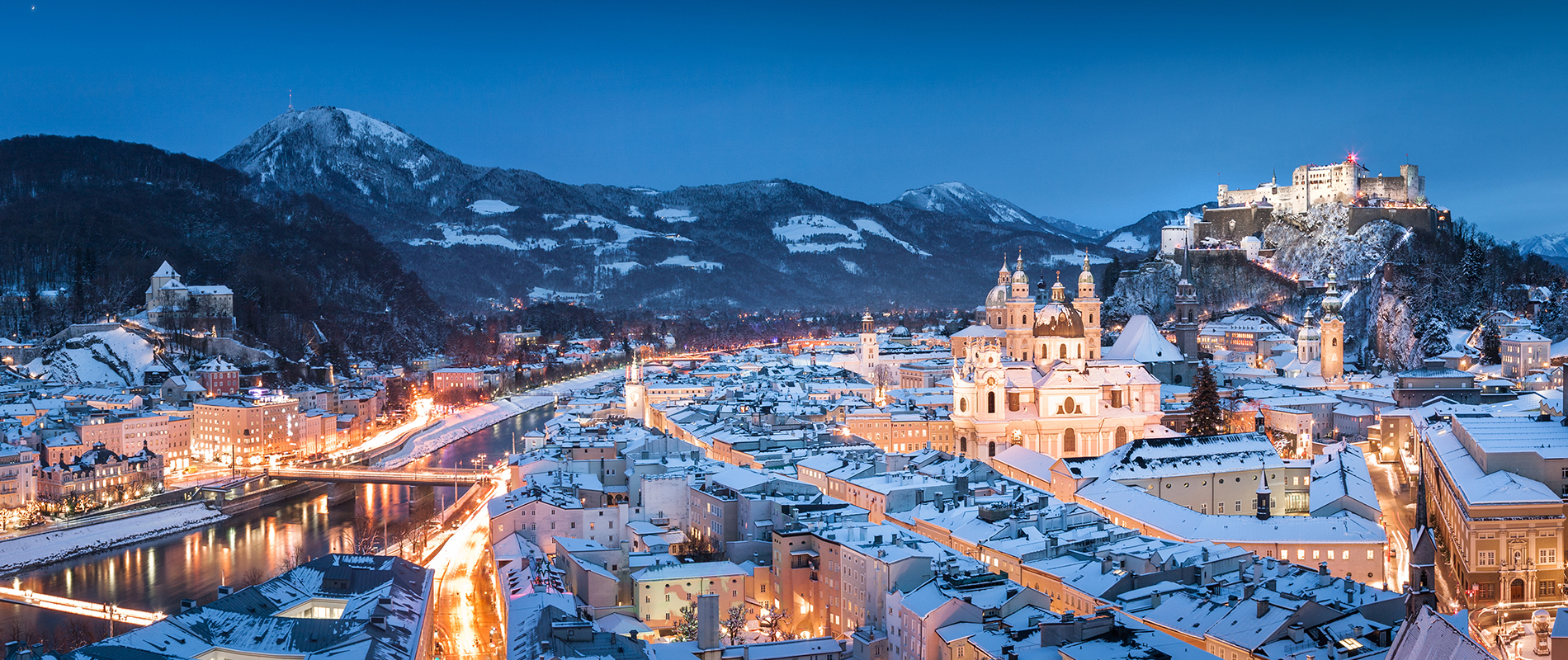
A small city offering a great wealth of culture, Salzburg is home to a blossoming arts scene, delicious cuisine, manicured parks, ornate architecture, and a rich musical tradition. The city sits snuggly in the northern foothills of the Alps, set against a backdrop of snow-capped peaks, cut in half by the curves of the Salzach River. On the left bank, the Altstadt (Old Town) radiates Old World charm – a UNESCO World Heritage site home to Renaissance and Baroque buildings, palaces, concert halls, and monasteries. An important center for classical music, Salzburg was the birthplace of Mozart, whose former home, No. 9 Getreidegasse, now serves as a museum. Standing guard above the Altstadt is the great fortress of Hohensalzburg, which crowns the peak of Mönchsberg (Monks’ Hill) forming an unmistakable feature of Salzburg’s storybook skyline. On the right bank of the Salzach, the 19th-century Neustadt (New City) is home to such landmarks as St. Sebastian’s Church and Mirabell Palace.
Although a worthwhile destination all year round, Salzburg is most magical during the holidays, when the wonderfully preserved Altstadt serves as a picture-perfect backdrop for perusing the city’s lively Christmas Market. One of the oldest Advent Markets in Europe, the Salzburg Christkindlmarkt offers incomparable holiday ambiance – bells ring out from onion-domed churches, the scent of fresh pine mingles with the aroma of cinnamon-sprinkled mulled wine in the crisp winter air, and cheerful groups huddle around festive market stalls.
Immerse yourself in the yuletide charm of Austria’s “City of Music,” with a tailor-made trip for Christmas in Salzburg designed by Tasteful Croatian Journeys’ team of experts.
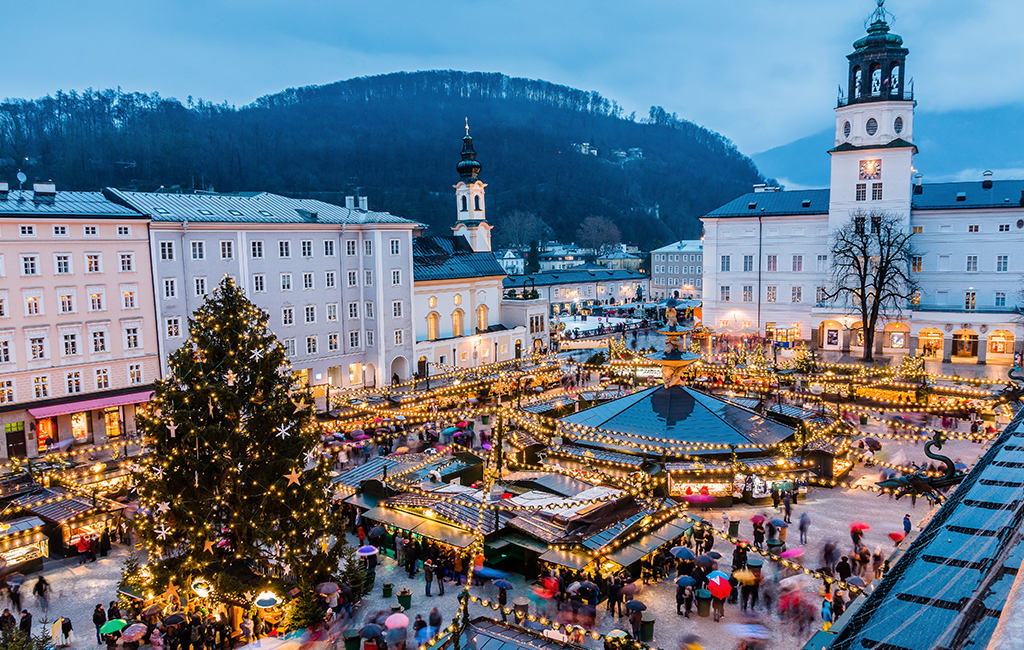
With close to 100 stalls, the Salzburg Christkindlmarkt offers plenty to see and do while still retaining an intimacy uncharacteristic of most markets this size. The main part of the market is located in the Altstadt in Residenzplatz and extends to Domplatz just in front of the cathedral, though smaller markets can be found around the city and countryside. Worth noting are Salzburg’s castle Christmas Markets, held in the courtyard of Hohensalzburg Fortress, the courtyard of Hellbrunn Palace, and in front of Mirabell Palace. Items on offer include leather goods, accessories, hand-painted ornaments, candles, and local delicacies in addition to a wide array of traditional Christmas objects such as Nussknacker (nutcrackers), Räuchermänner (incense smoking men), Schwibbogen (candle arches) and Weihnachtspyramide (Christmas pyramids) which originate in German-speaking Europe. Schneekugeln (snow globes), which are now a staple in souvenir stores worldwide, were first invented in Austria, making them a popular gift from this region.
There is no shortage of festive food and drink to be found at the Salzburg Christkindlmarkt. Among the many sausage-based specialties on offer, the Bosna has the distinction of originating in Salzburg. This unique sandwich consists of a bun that is filled with a grilled pork bratwurst, onions, fresh parsley, ketchup, mustard, and a secret blend of spices. Ofenkartoffeln (baked potatoes with a variety of sauces or toppings) are another popular snack. For something sweet, try Kaiserschmarrn (a traditional Austrian dessert of shredded pancakes usually served with apple sauce) or Bauernkrapfen (donuts made from yeast dough, sometimes filled and usually topped with powdered sugar). Of course, cookies and cakes such as Lebkuchen (gingerbread cookies), Vanillekipferl (Vanilla Crescent Cookies) and Kletzenbrot (a moist bread made with dried pears and other fruit) can be found throughout the market. Wash it all down with a piping hot Glühwein (mulled wine), perhaps “mit Schuss” which means “with an extra shot of alcohol,” usually rum or brandy.
Beyond food, drink, and shopping, visitors of Salzburg’s Christkindlmarkt are sure to enjoy the festive events program which includes weekly sing-alongs with an open choir, visits by the Christkind (Christ Child), and readings of Christmas stories for children. Around St. Nicholas Day on December 6th, numerous Krampus and Perchten parades also take place. This centuries-old folk custom focuses around the menacing, half-goat, half-demon counterpart of St. Nicholas who punishes naughty children. The processions feature performers in elaborately designed costumes, many with hand-carved wooden masks, shaggy pelts, and jangling bells, who run down the street half dancing, half stomping. Apart from the Christmas program, a variety of classical music concerts are available 365 days a year in inspiring historic venues across the city.
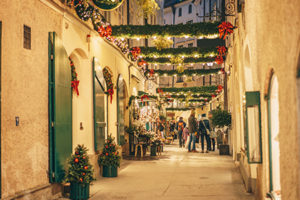
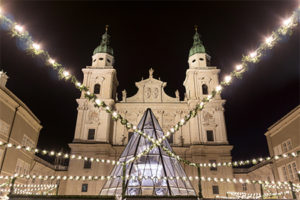
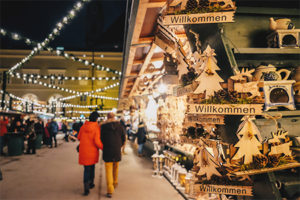
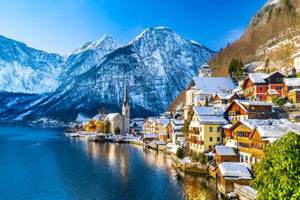
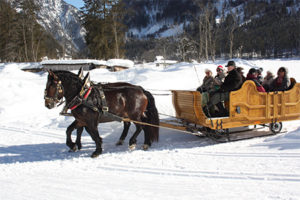
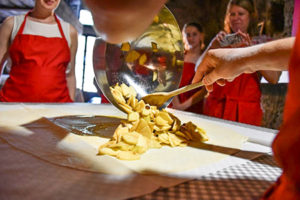
The Salzburg Christmas Market begins every year on the Thursday before the first Sunday in Advent and runs through December 26th.
